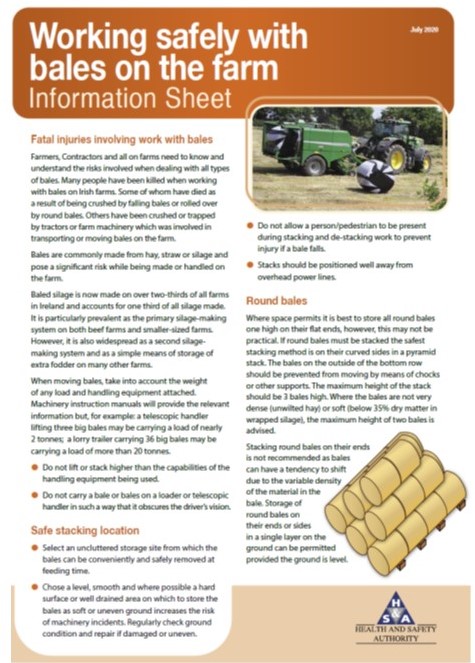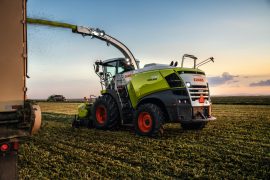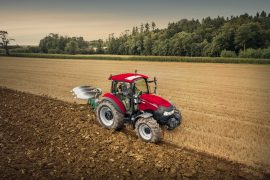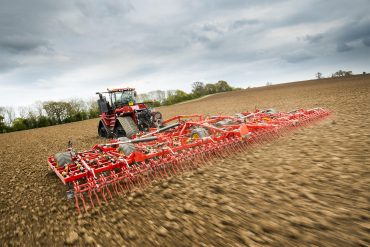The Health and Safety Authority (HSA) has issued a review of their Bale Stacking Information Sheet for farmers, contractors and all on farms need to know and understand the risks involved when dealing with all types of bales. HSA reports that many people have been killed when working with bales on Irish farms. Some of whom have died as a result of being crushed by falling bales or rolled over by round bales. Others have been crushed or trapped by tractors or farm machinery which was involved in transporting or moving bales on the farm.
Bales pose a significant risk while being made or handled on the farm. Baled silage is now made on over two-thirds of all farms in Ireland and accounts for one third of all silage made. It is particularly prevalent as the primary silage-making system on both beef farms and smaller-sized farms. However, it is also widespread as a second silage-making system and as a simple means of storage of extra fodder on many other farms.
When moving bales, take into account the weight of any load and handling equipment attached. Machinery instruction manuals will provide the relevant information but, for example: a telescopic handler lifting three big bales may be carrying a load of nearly
2 tonnes; a lorry trailer carrying 36 big bales may be carrying a load of more than 20 tonnes.
Do not lift or stack higher than the capabilities of the handling equipment being used.
Do not carry a bale or bales on a loader or telescopic handler in such a way that it obscures the driver’s vision.
Safe stacking location
Select an uncluttered storage site from which the bales can be conveniently and safely removed at feeding time.
Chose a level, smooth and where possible a hard surface or well drained area on which to store the bales as soft or uneven ground increases the risk of machinery incidents. Regularly check ground condition and repair if damaged or uneven.
Do not allow a person/pedestrian to be present during stacking and de-stacking work to prevent injury if a bale falls.
Stacks should be positioned well away from overhead power lines.
Round bales
Where space permits it is best to store all round bales one high on their flat ends, however, this may not be practical. If round bales must be stacked the safest stacking method is on their curved sides in a pyramid stack. The bales on the outside of the bottom row should be prevented from moving by means of chocks or other supports. The maximum height of the stack should be 3 bales high. Where the bales are not very dense (unwilted hay) or soft (below 35% dry matter in wrapped silage), the maximum height of two bales is advised.
Stacking round bales on their ends is not recommended as bales can have a tendency to shift due to the variable density of the material in the bale. Storage of round bales on their ends or sides in a single layer on the ground can be permitted provided the ground is level.





